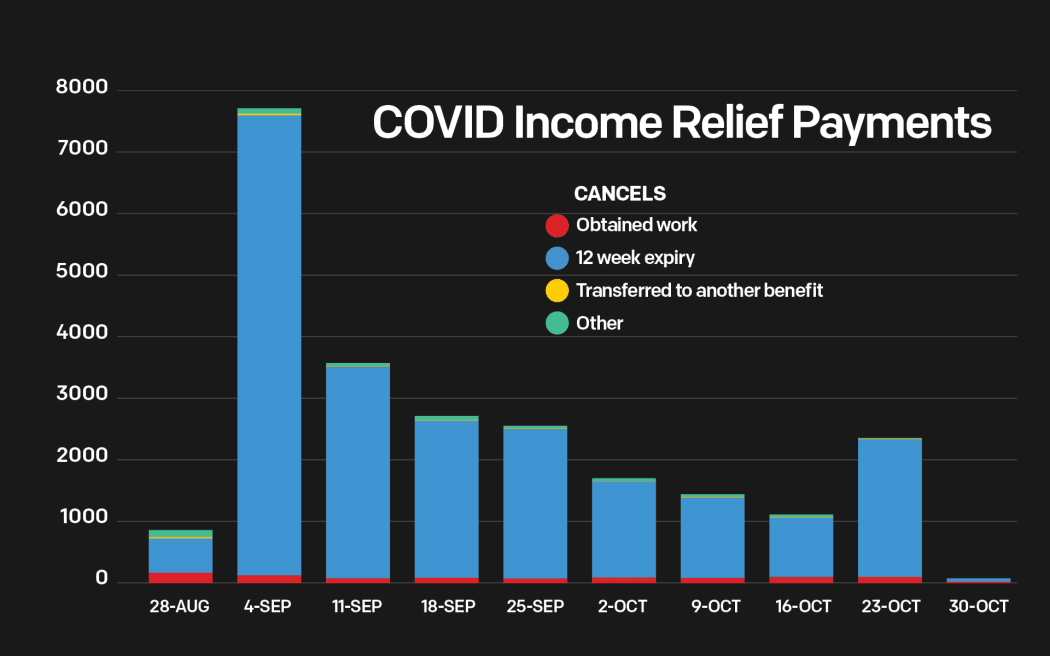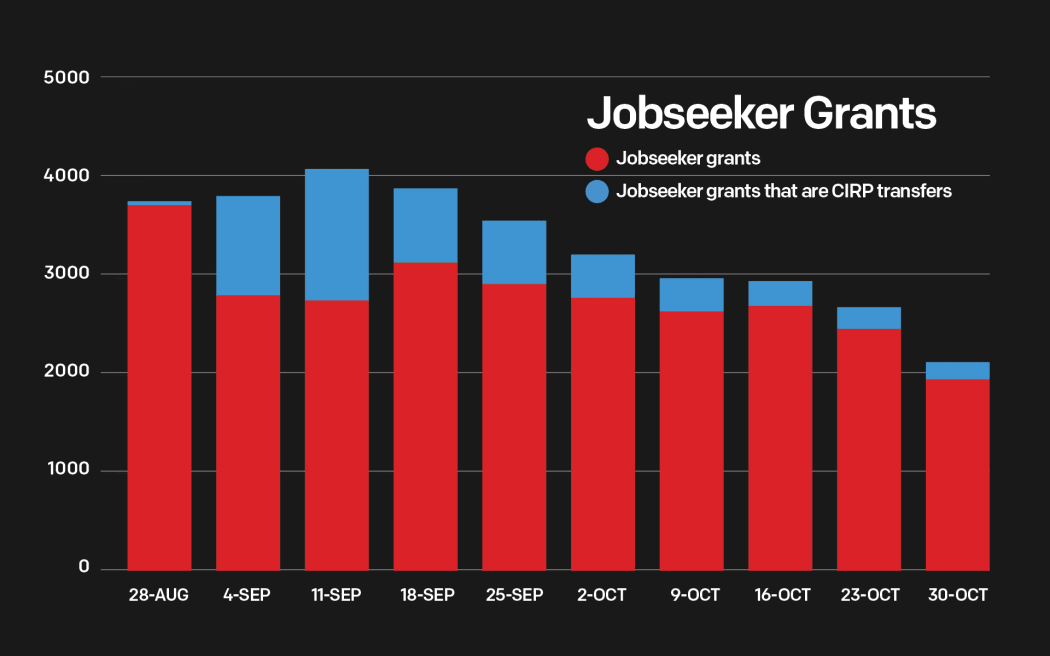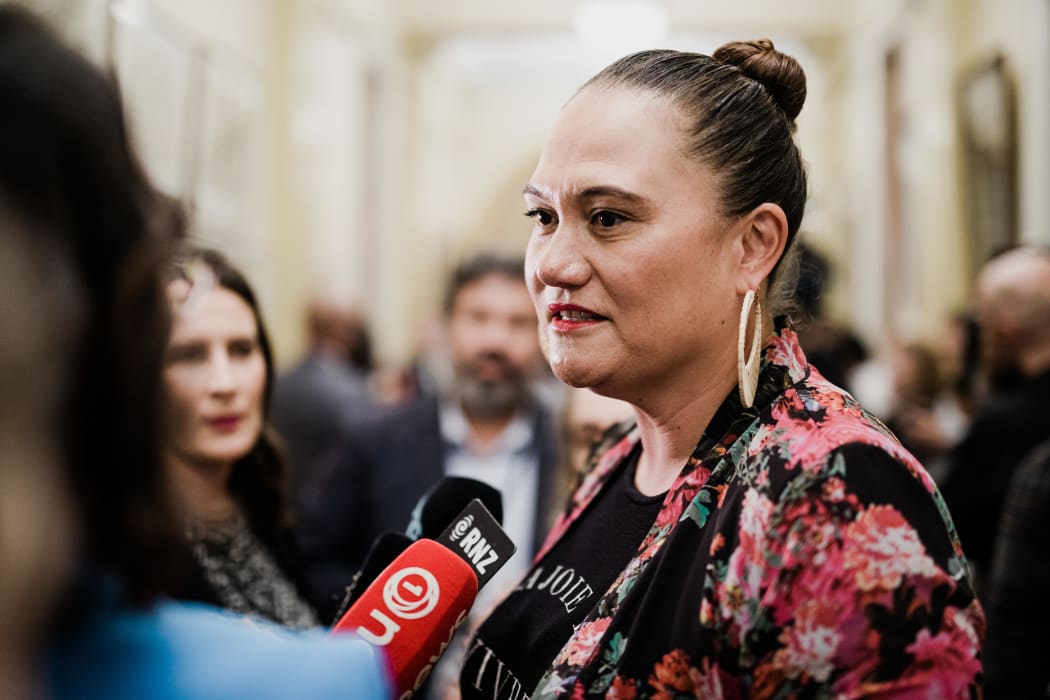Almost 23,000 people have come to the end of the Covid-19 income relief payment (CIRP) without finding a job - and it's possible thousands of them could still be out of work but unable to get other types of government support.

But because the criteria for the benefit is different to the CIRP, not everyone will be eligible for ongoing government support if they are still unemployed. File image. Photo: 123rf
The 12-week payment is for people who lost their jobs between March and October because of the pandemic - and applications for it close at midnight tonight.
It pays people who have lost full-time work $490 a week, while those out of part-time work get $250 a week.
Figures from the Ministry of Social Development (MSD), to the end of October, show there have been about 38,000 CIRP grants.
Since June, 27,000 people have come off the payment.
Of those, 2300 have cancelled it because they got a job.

Photo: RNZ / Vinay Ranchhod
Aside from a small number of people who transferred to other benefits, the rest have run the 12 weeks out.
But because the criteria for the benefit is different to the CIRP, not everyone will be eligible for ongoing government support if they are still unemployed.
University of Auckland sociologist Louise Humpage said, for example, people would have to use up all their holiday pay before they were able to go on to the benefit, whereas on the CIRP, that wasn't taken into account.
If someone's partner was still working, their income would also be factored in when they were applying for the benefit.
On the CIRP, someone's partner was able to earn up to $2000 a week, but that limit is much lower on jobseeker support.
"Some of these people will be coming from quite high-paying jobs, they might have received a redundancy, so that's great for them," Humpage said.
"But of course many people will be coming from fairly middle-income or low-income jobs and possibly with relatively little backstop, maybe three months or something and then after that they will be really struggling."
About 5300 people have transferred from the CIRP to the jobseeker benefit since mid-August.

Jobseeker grants. Photo: RNZ / Vinay Ranchhod
One of them is Imogen*, who was made redundant in July and went on to the CIRP.
She cut her costs and started applying for jobs, but no-one was getting back to her.
As the end of the 12-week payment crept closer, she got more and more worried.
"Just knowing that I was going from the Covid relief to possibly the regular benefit and knowing just how little money that was going to be," Imogen said.
While she has - just this week - got work, Infometrics senior economist Brad Olsen said there could be thousands of others who have not been so lucky and are still looking for work.
Of particular concern were those who were still job hunting, but weren't eligible for the benefit.
"It does seem like there are a lot of people out there in the job market looking for a role," Olsen said.
"There are roles going, but certainly not enough to fill all of those people who are looking for work. It does seem very unlikely that all of these people who are exiting the Covid income relief payment are finding a new role quickly after they end their entitlement."
There was also a growing skills mismatch, Olsen said.
"We've got people who want to work, and we've got employers who want to take on people, but they don't often overlap."
Minister of social development Carmel Sepuloni said there was no data about what had happened to people after they came off the CIRP if they had not gone on to another benefit.

Minister of social development Carmel Sepuloni. Photo: RNZ / Nate McKinnon
"Some will perhaps make the decision, for now, not to work, and some may be struggling to find work, particularly in areas they have worked in or have been committed to in the past," Sepuloni said.
"There are a range of scenarios - we don't necessarily have the hard evidence, we can only make assumptions about what has happened."
It's likely the government would look at the benefit eligibility rules as part of its welfare reforms this term, Sepuloni said.
CIRP uptake much lower than initial estimates
Uptake of the CIRP has been nowhere near as high as was initially estimated.
In April, a report to Cabinet said about 320,000 people could lose their jobs because of Covid-19 and be eligible for the payment.
It put the cost of the scheme at $850 million.
That number was subsequently revised down, with officials estimating in May 230,000 people could be eligible, with the cost put at $570m.
Sepuloni said New Zealand's economy was faring much better than was forecast at the beginning of the pandemic.
Initial forecasts also weren't able to take into account the wage subsidy extension and the resurgence wage subsidy, she said.
The lower numbers of grants meant the cost of the CIRP scheme would be "significantly less".
Cabinet had not considered extending the CIRP scheme because the levels of need had not been as high as was initially feared, Sepuloni said.
* Not her real name.






